
The Westland Scout was developed from the Saunders-Roe P531 which first flew on 20th July 1958 and was powered by a Blackburn Turmo 603 engine. My late godfather was a test pilot on this aircraft, with both the A&AEE Boscombe Down and with Ferranti Aircraft Systems.
The production Scout was fitted with a Bristol Siddeley Nimbus (later Rolls-Royce Nimbus) 101 engine although test flights had utilised both the Bristol Siddeley and a De Havilland Gnome H1000. The Scout’s layout involved two front seats and a three-seat rear bench although this could be replaced with a four-seat bench when fitted with modified rear doors. In the casevac role it carried two stretchers internally and two externally in panniers. Skid landing gear was standard.
The type entered service with the Army Air Corps in 1963 and was a replacement for the Westland Sioux (Bell 47) which in turn had replaced the Saunders-Roe Skeeter. The Scout was primarily used as a multi-role tactical aircraft with duties such as observation, liaison, training and search and rescue.
When armoured as a light attack helicopter it carried either two skid-mounted forward-firing (L8A1 GPMG) machine gun packs or a single pintle-mounted machine gun in the rear cabin. The pintle mount was available in both port and starboard mountings. The gun-packs, which were both aimed at a pre-set convergence angle, carried 200 rounds of ammunition and were mounted on a tubular spar that was fixed between the front and rear undercarriage legs. Tests were also carried out with a Browning M2, also mounted in the rear cabin.
Gun Sight
In the anti-tank role the Scout could carry four wire-guided missiles (the Nord SS11). These missiles had a range of around 6,000 metres but, to employ this weapon, some form of optical magnification had to be used so that the operator could identify the target as well as the missile flare. For this purpose the Army used the Avimo-Ferranti AF120. This unit had a x2.5 and x10 magnification and employed Ferranti’s considerable expertise in gyro-stabilisation to allow the weapons officer to deliver track and direct missile guidance. The lower part of the AF120 could be retracted into its housing while not is use and which gave this device a periscope-like ‘feel’ to it. The sighting head used a gyro-stabilised mirror and was enclosed in a double-skin casing outside the canopy and the entire system mounted on a tubular sub-frame which employed anti-vibration mountings. My godfather was involved in the weapons testing flights for the AF120 and which took place at the Castlemartin range in Pembrokeshire, South Wales.
Northern Ireland
In Northern Ireland the Scout pioneered the use of the Heli-Tele aerial surveillance system, having a gyro-stabilised Marconi unit fitted in the rear cabin. The Heli-Tele unit weighed some 700 lb (320 kg), although later developments reduced this weight significantly. In this role the rear cabin doors and seats were removed and four troops sat in the rear cabin with their feet resting on the skids. Operating with two aircraft in unison, this allowed an eight man patrol to be quickly inserted into an area and set-up snap Vehicle Check Points (VCPs) when necessary.
Up until 1973, the standard tail rotor colour scheme for the Scout were bands of red and white. On 14 September 1973 a soldier died during training at Gosford Castle, Armagh, after coming into contact with the tail rotor blades whilst the aircraft was on the ground. Following this accident the tail rotor blade colour scheme was changed to the distinctive black and white bands.
Because of the specialist nature of operations in Northern Ireland, a particularly important piece of role equipment was introduced in the form of the 'Nightsun' 3.5 million candle power searchlight. Operations at night were greatly enhanced with the introduction of Night Vision Goggles (NVGs), although these missions could still be hazardous. This was evident on the night of 2nd December 1978 when the pilot of XW614, 659 Sqn, became disorientated during a sortie and crashed into Lough Ross, killing the two crew. XW614 was the last of five Scouts written off during operations in the Province.
Falklands
At the start of “Operation Corporate” six Scouts from 3 Commando Brigade Air Squadron were operating alongside three machines from No. 656 Squadron AAC, and when 5 Infantry Brigade landed they were joined by another three Scouts from 656 Squadron.
During the Falklands conflict the Scout was engaged in CASEVAC, re-supply and Special Forces insertion roles. One aircraft, XT629, was one of two Scouts of B Flight 3 Commando Brigade Air Squadron, that was attacked by two FMA IA 58 Pucarás (the only Argentine air-to-air victory in the war) of Grupo 3 near Camilla Creek House, North of Goose Green. XT629 was hit by cannon fire and crashed, killing the pilot and severing the leg of the crewman, who was thrown clear of the wreckage on impact. The second Scout evaded the Pucarás and later returned to the site to CASEVAC the survivor.
Another Scout, XR628, of 656 Sqn AAC, suffered a main rotor gearbox failure whilst in a low hover over MacPhee Pond, 8th June 1982. XR628 had taken cover as two pairs of A-4 Skyhawks from Grupo 5 approached, these aircraft later attacked the RFA LSLs Sir Galahad and Sir Tristram at Bluff Cove. Once the threat had passed and the pilot began to climb away, the main gearbox failed at the main input drive and the aircraft made a forced landing at the lakeside in around four feet of water. The two crew were picked up by another 656 Sqn Scout piloted by Capt. J G Greenhalgh later that day. The aircraft was eventually recovered and airlifted to Fitzroy by Sea King on 11th June, but was subsequently written off on its return to the UK. Following research at the National Archive, Kew, it has been determined that XR628 was the same aircraft that was shot down, 26th May 1964, carrying 3 Para CO Lt. Col. Farrar-Hockley.
Scouts armed with SS11 anti-tank missiles gained combat experience during the Falklands campaign, notably on 14th June 1982 when an Argentine 105 mm Pack Howitzer battery dug in to the West of Stanley Racecourse was firing at the Scots Guards as they approached Mount Tumbledown. As the guns were out of range of the Milan ATGWs of nearby 2 Para, their 2IC, Major Chris Keeble, contacted Capt. J G Greenhalgh of 656 Sqn AAC on the radio and requested a HELARM using SS11 missiles to attack on them. As he was engaged in ammunition re-supply, his Scout was not fitted with missile booms. This was in order to reduce weight and increase the aircraft lift capability. Capt. Greenhalgh then returned to Estancia House, where his aircraft was refuelled, fitted out, and armed with four missiles in 20 minutes with the rotors still turning. An ‘O’ group was then held with the crews of two Scouts of 3 CBAS and Capt. Greenhalgh took off on a reconnaissance mission, while the other aircraft were fitted out and readied. Within 20 minutes he had located the target and carried out a detailed recce of the area. He fired two missiles at the enemy positions and then returned to a pre-arranged RV to meet up and guide in the other two Scouts. The three aircraft, positioned 100 metres apart, then fired a total of ten missiles (nine missiles hit, one failed) from the ridge overlooking the Argentine positions 3000m away and succeeded in hitting the howitzers, nearby bunkers, an ammunition dump and the command post. The Argentine troops returned mortar fire, a round landing directly in front of Capt. Greenhalgh’s Scout.
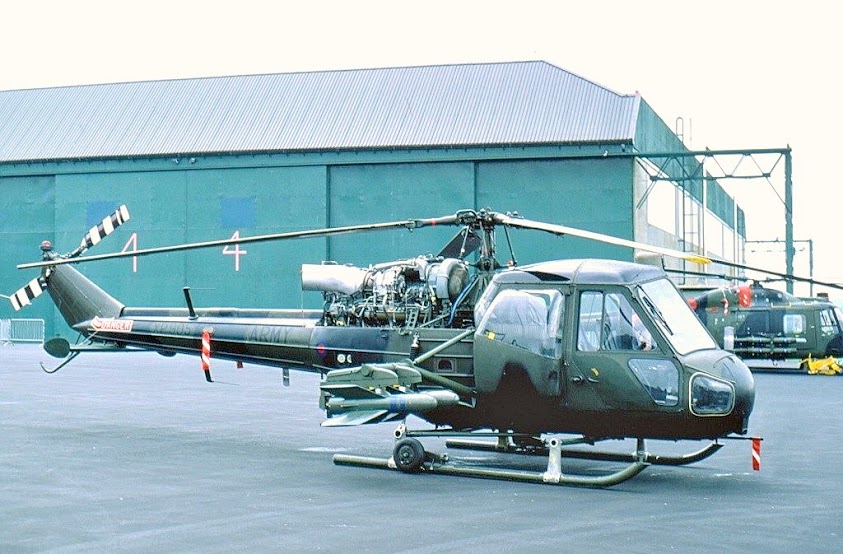
Army Air Corps Westland Scout AH1 XP905 (armed with four Nord SS11's) as seen at Middle Wallop on 11th July 1986 (Photo: Robin Walker)

Army Scout at Bessbrook Mill, County Armagh

The Avimo-Ferranti AF120 gun sight for the Scout

Internal 'periscope' arrangement for the AF120

Casualties being transferred to a Westland Scout during the Falklands War in 1982

Army Scout AH1 XP900

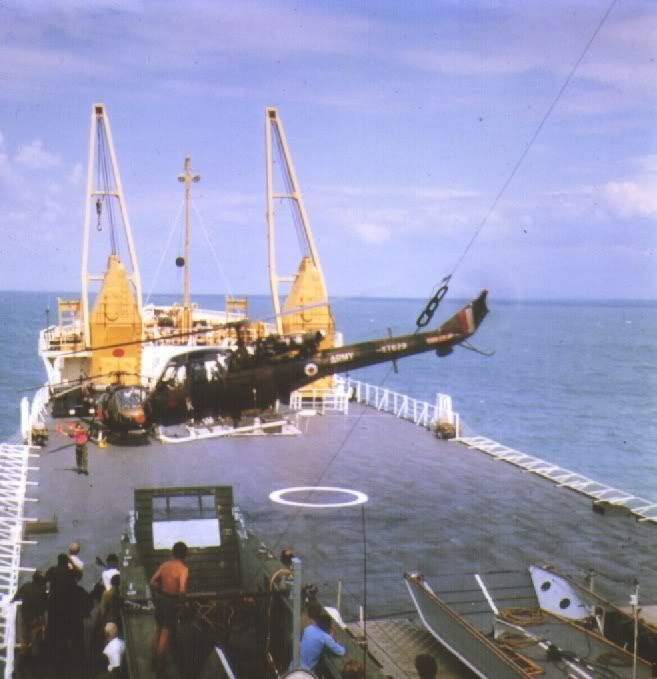
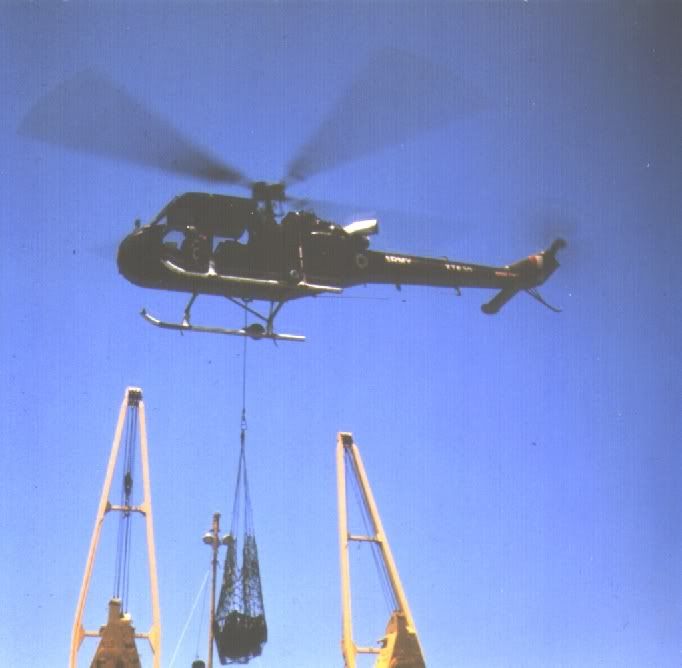

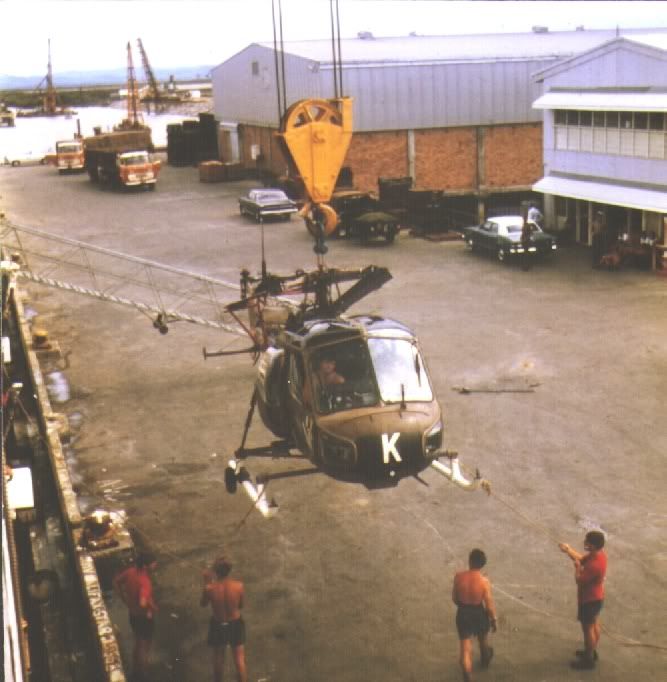
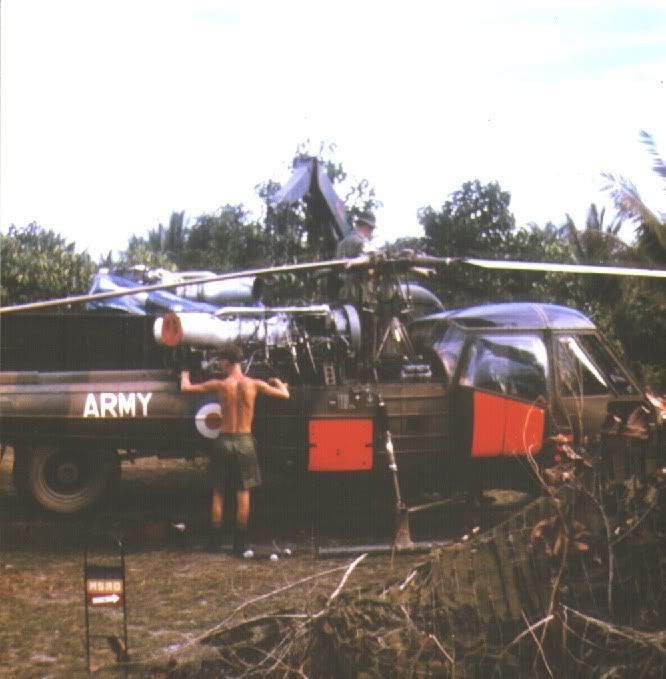

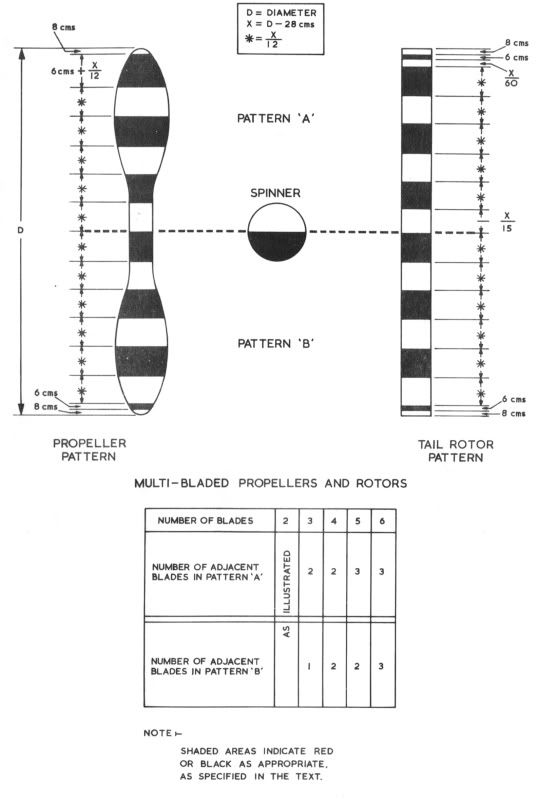
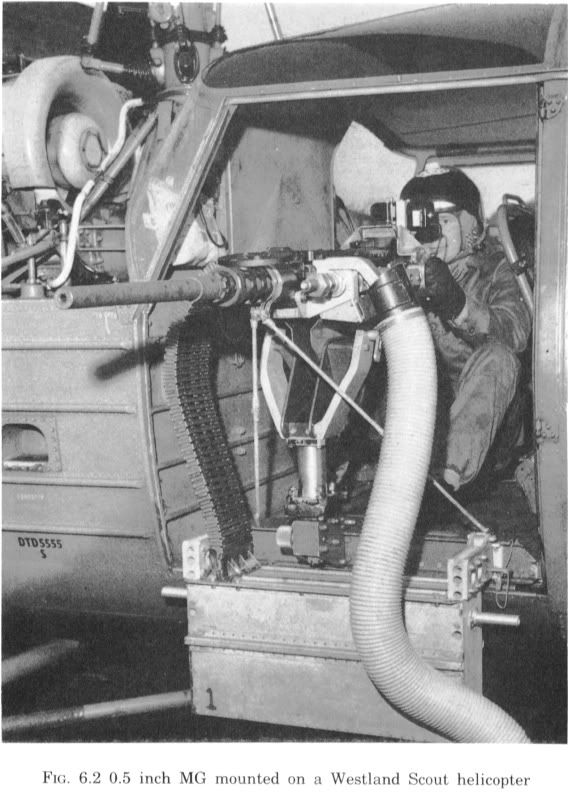
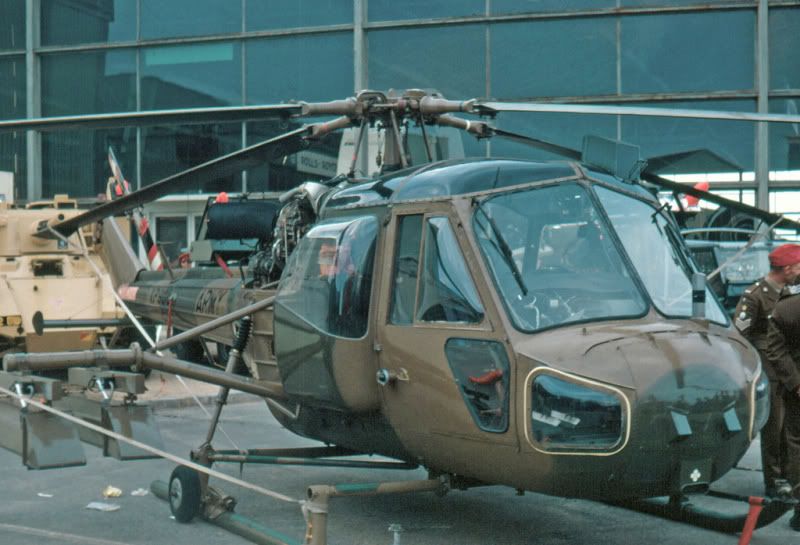




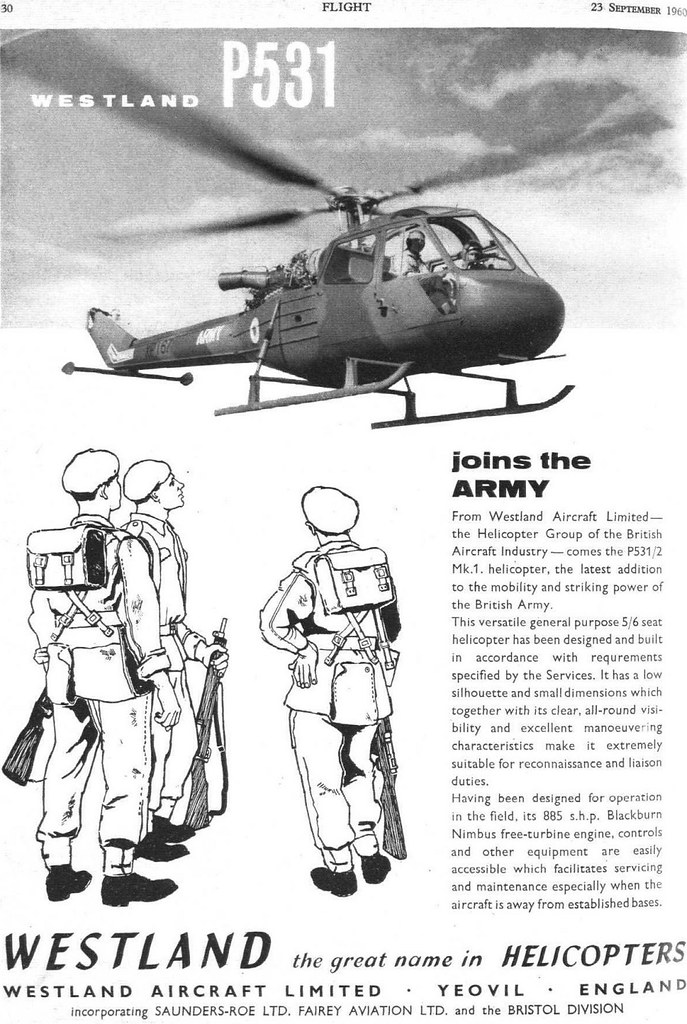







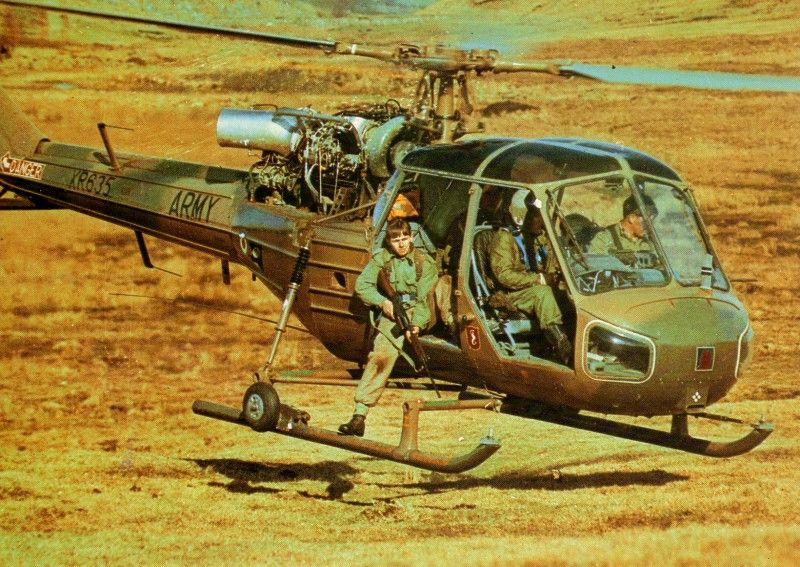
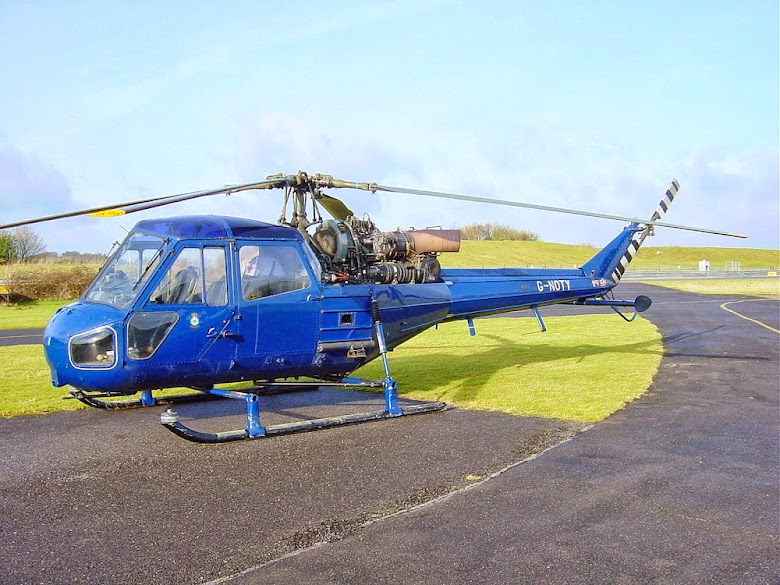






 ( I took the photograph. ) It was the end of Excercise Clockwork 1979 and I got back to Plymouth on 23 March.
( I took the photograph. ) It was the end of Excercise Clockwork 1979 and I got back to Plymouth on 23 March.


Comment